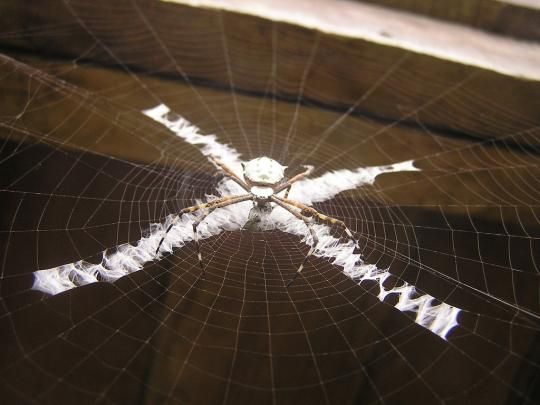|
|
Spider Web
|
Some spiders have a cribellum, a modified spinneret with up to 40,000 spigots, each of which produces a single very fine fiber. The fibers are pulled out by the calamistrum, a comb-like set of bristles on the jointed tip of the cribellum, and combined into a composite woolly thread that is very effective in snagging the bristles of insects. The earliest spiders had cribella, which produced the first silk capable of capturing insects, before spiders developed silk coated with sticky droplets. However most modern groups of spiders have lost the cribellum.
Even species that do not build webs to catch prey use silk in several ways: as wrappers for sperm and for fertilized eggs; as a "safety rope"; for nest-building; and as "parachutes" by the young of some species.
• Reproduction and life cycle
Spiders reproduce sexually and fertilization is internal but indirect, in other words the sperm is not inserted into the female's body by the male's genitals but by an intermediate stage. Unlike many land-living arthropods, male spiders do not produce ready-made spermatophores (packages of sperm) but spin small sperm webs on to which they ejaculate and then transfer the sperm to syringe-like structures on the tips of their pedipalps. When a male detects signs of a female nearby he checks whether she is of the same species and whether she is ready to mate; for example in species that produce webs or "safety ropes", the male can identify the species and sex of these objects by "smell".
|
|









